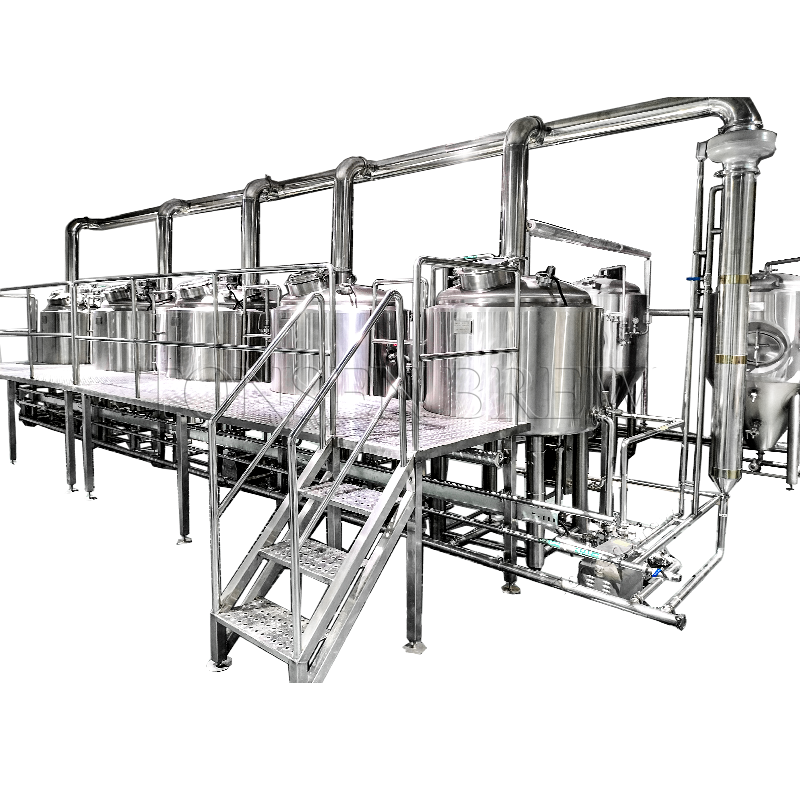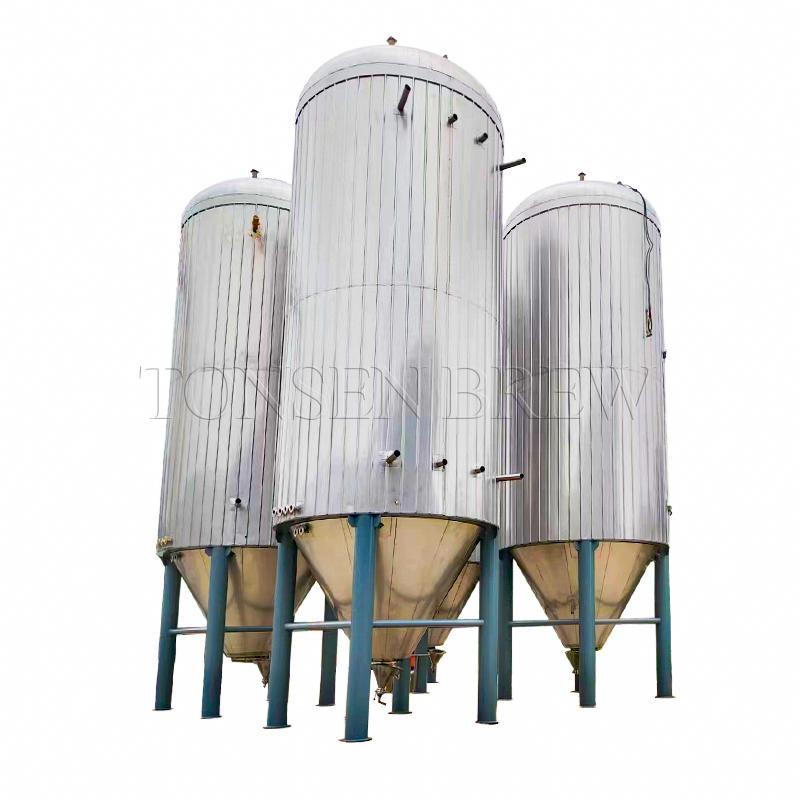Behind every glass of beer lies a complete set of beer brewing equipment. How does the process unfold step by step from malt to beer?
Stage 1: Milling and Mashing
The first step in brewing is milling, where malt is crushed to expose its internal starch structure. The milled malt is mixed with hot water and transferred to a piece of equipment called a mash tun. Here, natural enzymes in the malt convert starches into fermentable sugars.
Modern mash tuns are typically made of stainless steel, equipped with stirring devices and heating jackets to ensure uniform temperature. Mashing temperatures are generally controlled between 62°C and 68°C. Lower temperatures result in a lighter-bodied beer, while higher temperatures produce a fuller, richer brew.

Stage 2: Lautering and Boiling
After mashing, the wort (sugary liquid) must be separated from the spent grain—a process known as lautering. Once lautering is complete, the clear wort is transferred to a boil kettle for heating, where hops are added.
Boiling serves multiple purposes: it sterilizes the wort, extracts hop aroma and bitterness, and removes unwanted compounds. In modern commercial brewing systems, boil kettles often feature steam jackets or electric heating systems for stable, efficient heat supply. Boiling time typically ranges from 60 to 90 minutes, depending on the recipe and beer style.

Stage 3: Cooling and Fermentation
After boiling, the wort must be rapidly cooled to a temperature suitable for yeast activity. Ale yeasts generally ferment at 18–22°C, while lager yeasts require lower temperatures (8–12°C). Rapid cooling helps prevent contamination by unwanted bacteria and preserves flavor purity.
The cooled wort is pumped into a fermenter—one of the most critical pieces of equipment in the brewing process. Here, yeast begins fermentation, converting sugars into alcohol and carbon dioxide. Fermentation cycles vary from a few days to several weeks, depending on yeast strain and recipe.
Modern fermenters are usually stainless steel, with temperature control systems, pressure valves, and cooling jackets. Their conical bottoms allow easy separation of yeast and sediment, facilitating cleaning and yeast collection. Large breweries often use multiple fermenters to enable continuous production.
Stage 4: Conditioning and Clarification
After fermentation, the beer undergoes a conditioning phase. During this time, flavors mellow, and off-odors are naturally removed. The beer is then transferred to a bright tank for clarification and carbonation.
Bright tanks store beer under controlled pressure to achieve optimal carbonation levels. These tanks are essential in any professional brewing system, ensuring the beer remains crisp, clear, and fresh before packaging. Small breweries often use bright tanks as storage vessels or to directly supply tap lines.
Stage 5: Packaging and Quality Control
The final step is packaging—whether in kegs, bottles, or cans—where hygiene is paramount. Modern packaging lines typically include automatic fillers, cappers/sealers, and labelers to minimize oxidation and extend shelf life.
Commercial breweries also maintain dedicated laboratories to test each batch for alcohol content, bitterness, clarity, and microbial stability. Consistency in quality is a hallmark of professional brewing, relying on reliable equipment and strict process control.
From malt to finished beer, every step relies on precise brewing equipment and strict process control. Understanding how a brewing system works not only helps brewers produce more consistent beer but also improves production efficiency and profitability. Whether you are setting up your first small brewery or upgrading to a fully automated commercial brewing system, the equipment you choose will determine your success or failure.
Looking for reliable beer brewing equipment? Contact us for a tailored solution.
